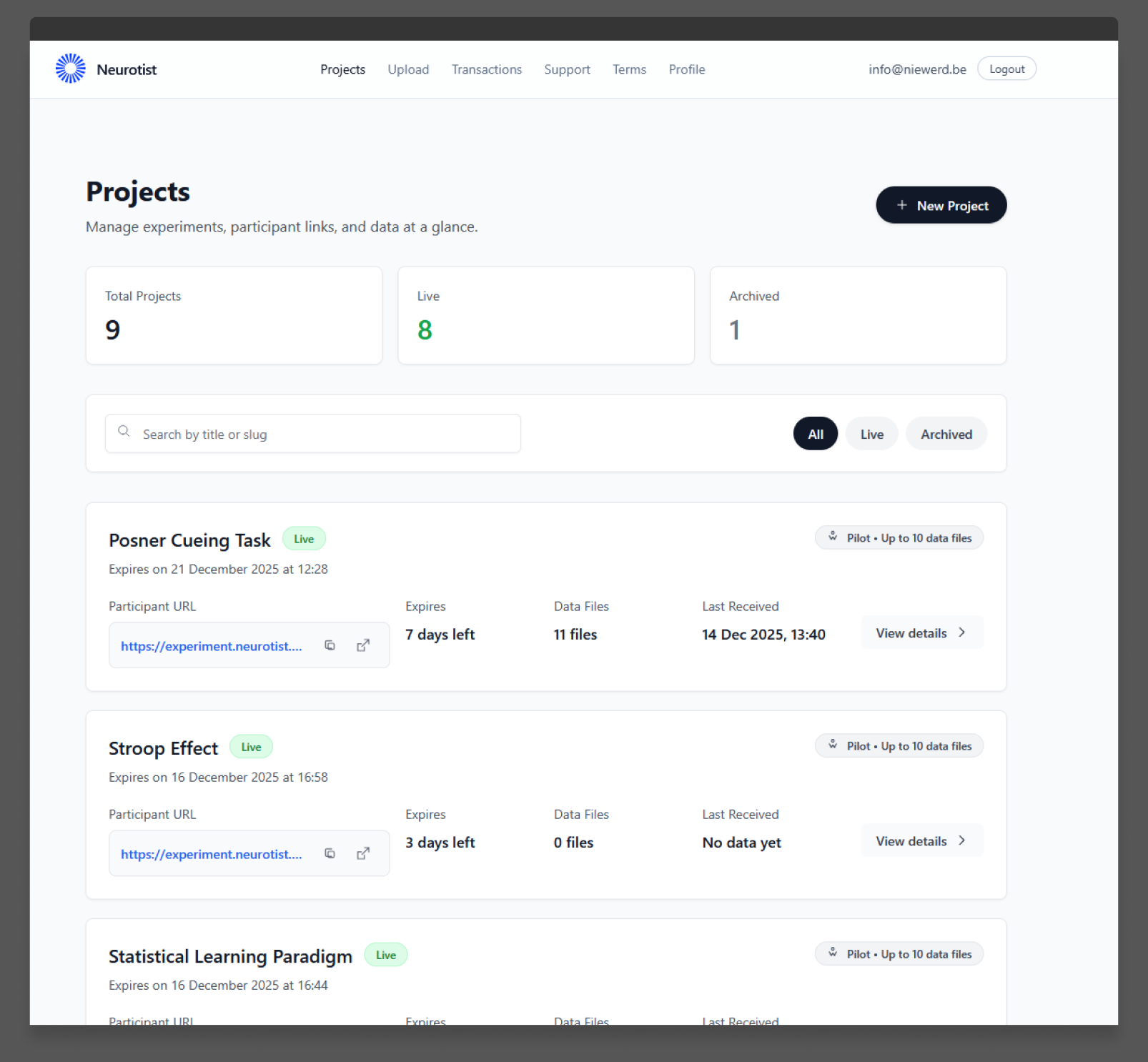Upload your experiment
Bundle your jsPsych or PsychoJS project, hit upload, and we recognise the structure automatically.
We're actively testing Neurotist. Email us for early access and help validate the platform.
Neurotist lets you deploy behavioural experiments effortlessly. Upload your experiment, preview instantly, and start collecting data with no coding, no hosting, and no stress.

Hosting experiments shouldn’t require a developer. Neurotist removes the setup work so you can focus on research.
Bundle your jsPsych or PsychoJS project, hit upload, and we recognise the structure automatically.
Run a free 7-day live test to check stimuli, flow, and data output before spending a cent.
After your 7-day pilot, pick a paid pass and invite real participants with confidence.
Store and export participant data securely whenever you need it.
Platform capabilities
Neurotist gives you everything you need and nothing you don’t. Fast, secure, affordable hosting designed for academic workflows.
Deploy in under a minute without an engineering backlog or server setup.
Spin up a live 7-day test window to verify every detail before participants arrive.
Lab and Unlimited passes support any study size with lower per-participant costs.
Encryption in transit and at rest on fully EU-based infrastructure.
EU-based, encrypted storage with participant data always accessible to download.
A lightweight platform continuously refined with feedback from active labs.
Competition
Three-month study: how Neurotist compares to self-hosting and commercial platforms.
Questions or feedback?
We're testing Neurotist right now and looking for testers. Email us and we'll give you access so you can see how uploads, deployments, and data capture work.
Email: hello@neurotist.com
Pricing
Start with the Experiment Pass tiers. Lab and Institution accounts are coming soon with multi-user support and university-hosted storage.
Pilot
Free • One-time
Test and debug before paying.
Study
One-time • Per study
Run a full study with confidence.
Unlimited
One-time • Per study
Long-running studies with high throughput.